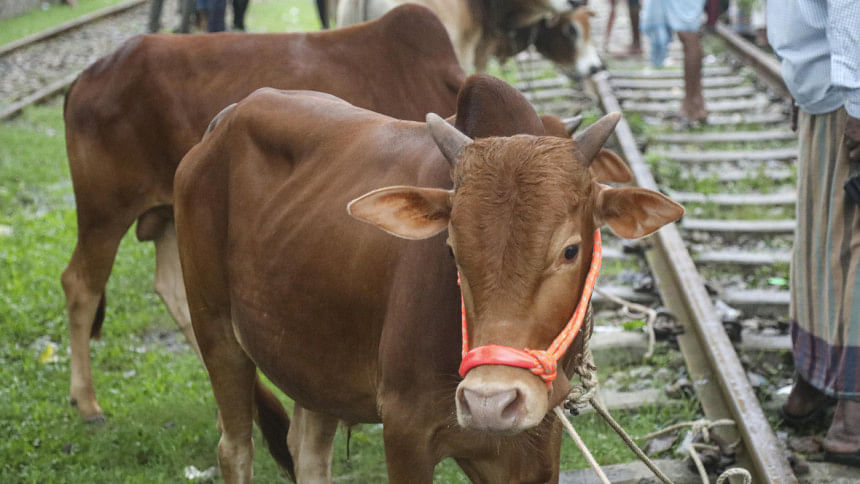In Ctg, red bulls remain tied to Eid tradition

In Chattogram, the arrival of Eid-ul-Azha is marked by the sound of hooves and the sight of deep red bulls -- an unmistakable sign of a cherished tradition.
For generations, families have chosen the iconic Red Chittagong Cattle (RCC), locally known as "Lal Birish," not merely for Qurbani, but as a symbol of cultural pride and ancestral heritage.
With its distinct reddish-brown coat and medium build, the RCC stands apart from other breeds. Yet beyond its appearance, this native bull represents something far more profound: continuity, identity, and a deep-rooted respect for one's origins.

"I saw my grandfather buy a red bull every Eid," said Mohammad Jahir, a 68-year-old from Hathazari upazila. "My grandfather believed it brought ancestral tradition to the family. Now I do the same with my own sons."
In Chattogram's villages, Eid morning begins with prayers, but the real gathering often happens afterwards when people come to admire the bulls. Children run to the courtyards, pointing excitedly at the red-coated animals, while elders share stories of bulls from past years -- how large they were, and who raised them.
Syed Mojibul Hoque, a retired school teacher in Fatikchhari, said, "The red bull is a source of pride. It may not be the biggest, but it's ours. When I do Qurbani with a red bull, I feel I'm doing what my father and his father did. It connects me to them."
The RCC, known for its red coat and disease resistance, is native to the southern regions of Chattogram, especially in Satkania, Anwara, Patiya and other areas.
According to the Bangladesh Livestock Research Institute (BLRI), typical male RCC cattle weigh about 250–400 kilogrammes, while their female counterparts weigh roughly 150–250 kilogrammes.
Nurul Amin, a 23-year-old university student from Chandanaish upazila, said, "When I was posting photos of our red bull online last year, people asked about it. We believe that it reminds us we're from Chattogram."
In Chattogram, people specifically buy RCC bulls for sacrifice, said Dr Ferdous Dipti, upazila livestock officer of Chandanaish. "These cattle were readily available in the region. But the RCC breed is now under threat due to crossbreeding and neglect," she added.
The BLRI launched the RCC Improvement and Conservation Project, which currently maintains over 300 purebred cattle. Additionally, a specialised farm has been established in Hathazari as part of an expanded artificial insemination initiative aimed at preserving genetic purity and offering an alternative to uncontrolled crossbreeding.
Amid a decline in RCC cattle numbers, many in Chattogram still see buying a red bull for Qurbani as a way to preserve ancestral tradition. For them, it is not just a sacrifice -- but a continuation of cultural heritage.

 For all latest news, follow The Daily Star's Google News channel.
For all latest news, follow The Daily Star's Google News channel. 



Comments